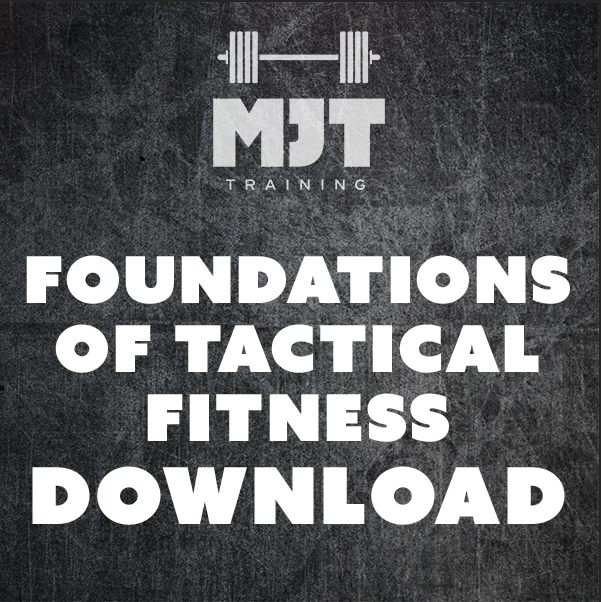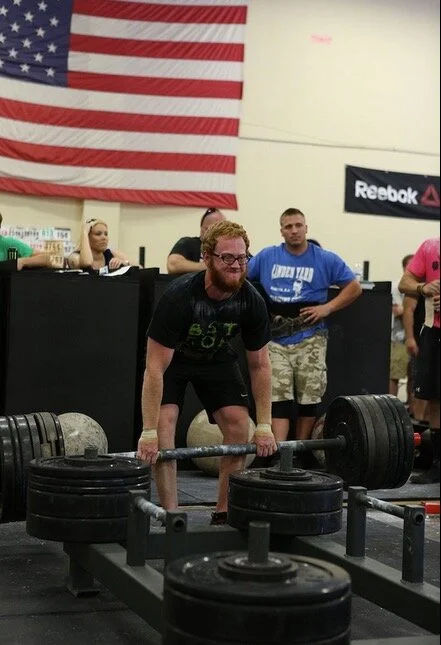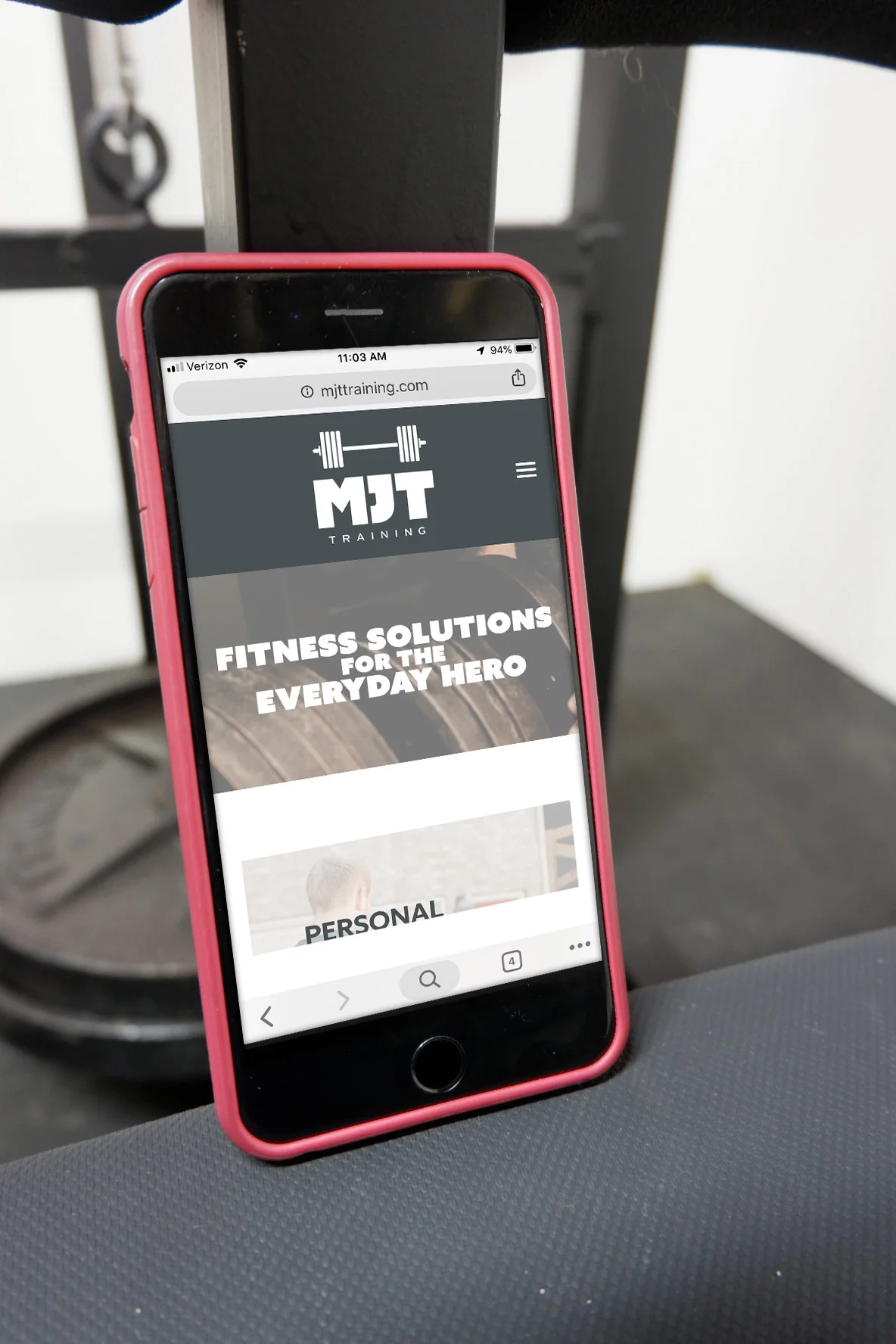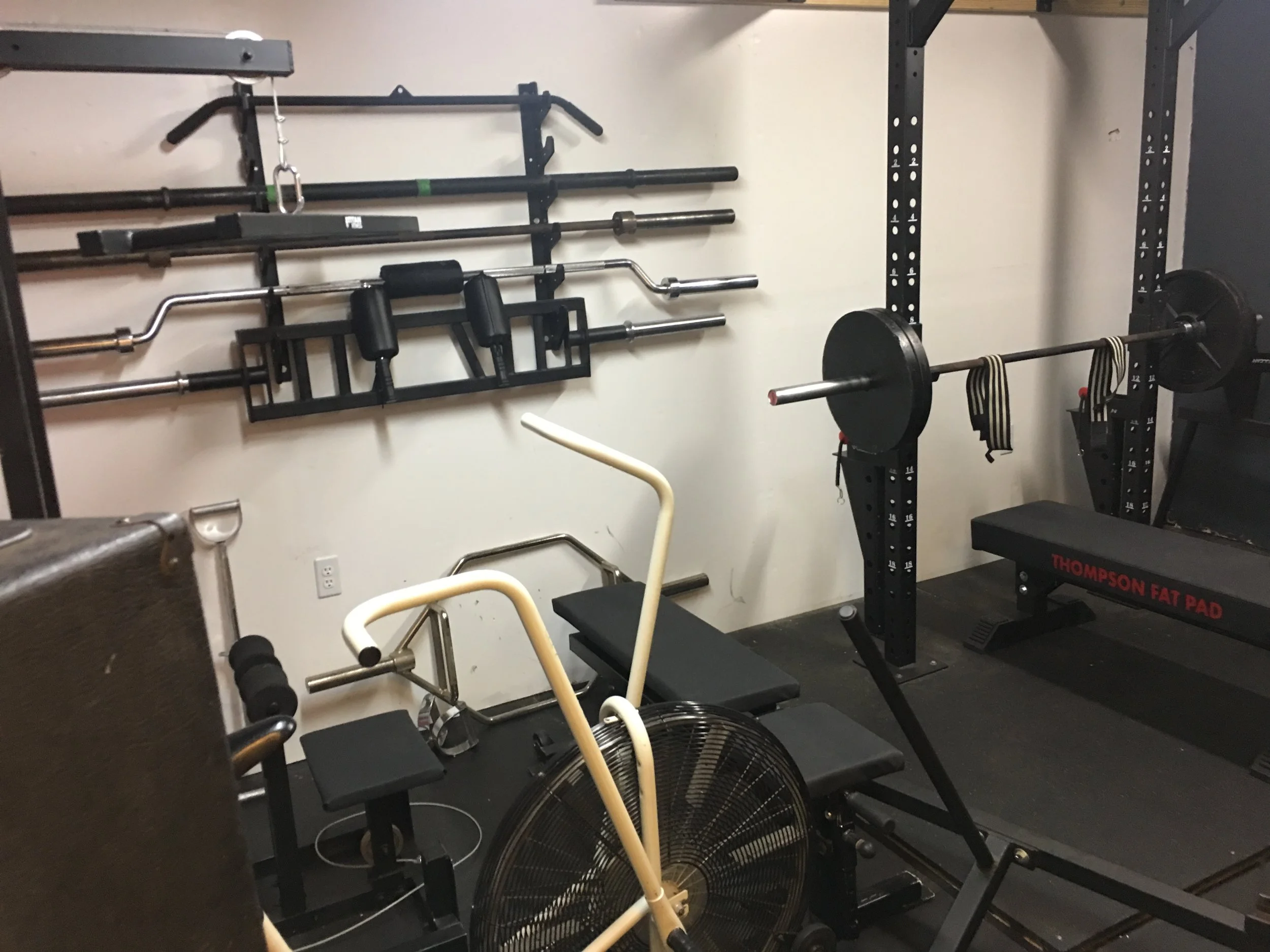

TESTIMONIALS
I knew how to push myself hard and stay consistent with a diet and exercise program. I was also constantly hitting growth plateaus while not dealing with a host of annoying injuries and illnesses. MJT Training has helped me push through plateaus, injuries, and other life setbacks while increasing my deadlifts by 17%, my bench press by 12%, and my pull-ups by 100% in two months. I highly recommend giving MJT Training a call!
Nathan M - US Army/Client
Prior to MJT I had hit a plateau in my normal weight training routine, bench press 245lbs,deadlifts 295, squats 285, overhead presses 135. I was maxing out without progress. I started working with Mike & got outta my comfort zone, which broke my mental block. My goal when I started training with Mike was to increase strength & to fine tune my technique. After 12 weeks I saw progress in the lifts mentioned above. I now max out, bench press 270, deadlifts 335, squats 300, overhead press 155.
Audrean M - Detective
“Mike has not only been an insightful conversation partner who has pushed me to study different training modalities & authors, but he is one of the very few people who can work effectively with various populations ranging from elderly general population to tactical operations to aspiring young athletes.”
Sam O - US Army/HS Football Strength Coach
…He took all the time that was needed to show me how to train the proper way…I started out only being able to do 95lbs Squat, 95 bench, 135 deadlift, 55 overhead press, all 3 sets of 5. With Mikes help I have been able to improve my numbers to 145 squat, 140 bench, 235 deadlift, 85 overhead press, all 3 sets of 5. I have also improved on my pull-ups where at first I could barely even do 1, but now I can do several…all in about 2 months. If you want someone who is going to be there for you, and make sure you are getting the proper training to make you stronger, use MJT.
Devyn H, Aspiring Police Officer/Client
“As someone who has trained a clientele base consisting of everyday people all the way to professional athletes currently in the NFL, Mike is someone I would go to for advice and knowledge when my own didn’t suffice…It’s hard to let someone else train those you care about, but take it as a sign I would happily let Mike be in charge of my very own family’s well being”
Erik S - Police Officer/Strength Coach
“Mike is great to work with!!! He is great at programming and knows what to set better than I do for myself! Very prompt with answering questions and extremely helpful!
Ian H - Police Sergeant/Client
10-8 Program Series

High Speed, Low Drag
Fat loss happens the same way for everyone. Consume fewer calories than you burn and it will happen. At its core, fat loss is a math equation.
However, first responders have unique job demands and challenges that make fat loss and maintaining a healthy lifestyle especially difficult. Stress, anxiety, shift work, lack of sleep, and rotating schedules all take their toll. Up to 80% of police officers are considered overweight or obese, yet policing is at times have a very physical job where the lives of both civilians and officers depend on a high fitness level. Most officers can’t keep up.
This has to change. And change can start with you.

$19.00
No gym required.
If you’re a first responder, scheduling quality training time around work, family, and other obligations can be very difficult. Getting to the gym after a 12-16 hour shift is daunting.
Enter 10-8: Bodyweight.
I created this 12 week program to solve that problem. As long as you have a pull-up bar and a TRX or other suspension trainer, you’re good to go. You can build massive levels of strength, power, and endurance in your living room, basement, or garage.

$19.00
Dominate your PFT and academy
Training for the police academy is tough. Not only do you have to worry about being in shape, but you have all the other life stress that comes with a career change and going into a tactical occupation.
I created this 12 week program to take care of the physical preparation for you. You can’t prepare for much of what you’ll experience in the academy. But you can prepare physically. At most academies, the physical training is pretty cut and dry. Your goal isn’t just to pass, though.
You should prepare to the absolute best of your ability.
This program will give you a roadmap. You just have to put in the work.

19.00
Elite Barbell Training for Real-World Preparedness
If you’re training for a tactical job using a non-tactical program, STOP.
Those workouts weren’t written for you. You’re an athlete. Your job is your sport. And athletes train for their sport.
Would you use a volleyball program if you wanted to compete in powerlifting?
Training for performance in a tactical job doesn’t have to be complicated, but it needs to be targeted. This program will prepare you for whatever the streets throw at you. It will increase your strength, power, and endurance. It goes beyond the basics of bodybuilding-style programs and trains other aspects of fitness that are essential for anyone in a tactical occupation.

$19.00
The firefighter Candidate Physical Ability Test is no joke. You’ll have to move quickly under heavy loads, climb stairs, and perform many simulated job tasks that could one day mean the difference between life and death for you, your coworkers, and the people you’re trying to save.
This is your foundation of physical preparedness. Don’t go into your academy lagging behind your peers or draw unwanted attention to yourself because you weren’t disciplined enough to prepare properly.
Prepare now and shine in the academy.

Have your own six.

10-8 Blogs
“I just don’t have enough willpower.”
“I’m too busy.”
“My significant other isn’t on the same page.”
“I’ve tried everything and nothing works.”
I hear it over and over. And most of the time it’s coming from a place of genuine frustration, not laziness.
Negative self talk will kill your goals. Truth is, these aren’t moral statements. You are not a bad person because you struggle with motivation, or willpower, or an unsupportive environment, or confusion.
Time shouldn’t always dictate your workouts, but life happens. Something is almost always better than nothing. Give these ideas a try next time you need to squeeze a workout in, or you need to shorten your normal session due to other obligations.
This year has been hard. Really hard. Between the natural disasters that rocked Nashville in the spring and now the ongoing COVID19 pandemic, we’re all facing a great deal of uncertainty, instability, and uneasiness.
The mental health toll that these events have taken on us can’t be measured. I know I’ve struggled with that uncertainty. Sleepless nights, overthinking, finding it hard to relax, even physical symptoms like shakiness and that tight feeling in your chest that doesn’t seem to go away. Maybe that’s you too.
Recently I heard a recruiter was mad at one of my clients for lifting weights, thinking that the lifting would make him big and slow when he needs to be lean and fast. There’s always an exception, and if you look for an example of someone that got big and slow from lifting, you can probably find one.
That’s not the rule though.
Sleep needs vary a lot from individual to individual, and I have no idea how much sleep YOU actually need. You probably already know how much sleep to get to feel and perform your best. Unfortunately, it isn’t always easy to get whats “optimal.”
Even when your schedule doesn’t allow for a full 8 hours, there are still many things directly under your control that you can address to increase the QUALITY of the sleep you get. Not everyone needs all of these methods, all the time, but you may find them useful during high-stress and busy portions of your life.
Long duration cardio can get boring, but it’s absolutely necessary to improve both health and performance. Aerobic fitness is correlated with many positive health markers (improved insulin sensitivity, lower resting heart rate, lower blood pressure, and higher heart rate variability, among others) and improves recovery from strenuous exercise. However, running or swimming for long distances tends to beat people up, so if these methods aren’t necessary for job performance or a PT test, I like to prescribe tempo circuits for longer aerobic work.
I learned about tempo circuits through coaches Chad Wesley Smith and Charlie Francis. Basically, this involves alternating low intensity aerobic work with calisthenics, mobility work, or other low-level exercises. This breaks up the monotonous joint stress of repetitive movement while also allowing for a wide variety of other goals to be targeted at the same time.
“Maximal Aerobic Speed,” or MAS, is the fastest you can run while still relying on oxygen to produce energy. Increasing this speed is important for all distance running but especially 1.5 and 2 mile runs.
Interval training is an important component of a good running program, but we don’t all have access to a track or a nicely measured area to run. The treadmill isn’t a great option unless it’s all you’ve got.
So what do?
It’s been a couple of weeks since stay-at-home guidelines have been issued from the city and state. The gym withdrawal is real, and for many of us meatheads that live and die for heavy weights, at-home bodyweight workouts sometimes get tedious after a while. If you’re used to pushing your limits in strength, many bodyweight exercises might not feel challenging enough.
Fortunately, there are many creative ways to make bodyweight workouts more challenging, interesting, and beneficial. You may not put any weight on your lifts during the next few weeks, but I guarantee you’ll maintain your muscle mass and maybe even drop some fat and improve any nagging joint issues you may have.
The last couple of weeks have been insane, hence the lack of any posts here. On Tuesday March 3rd my property and neighborhood got rocked by the Middle TN tornado, forcing a 3 day delay in my first vacation in about 2 years. Crazy circumstances, a ton of help from friends and strangers, and a fair amount of luck still allowed me to get away to Alaska for a few days. Got back home last week to COVID19 causing mass toilet paper shortages.
These are strange times.
Amid all the uncertainty, here are a few friendly reminders and some resources that will help you if your gym is currently closed due to COVID19.
It sounds counterintuitive, but creating systems for yourself actually frees you up.
Willpower and mental energy are finite resources. Work and family stress take up most of our reserves, and unexpected life events derail everyone from time to time. Expect the unexpected and consider putting a plan in place for repeated tasks. We all have to eat. That’s non-negotiable. Why not have a system for how you prepare food so you aren’t always scrambling, hungry and lethargic, or bloated and overstuffed?
Prepping meals ahead of time is a proven way to keep yourself on your nutrition plan and minimize the chances of going off-plan unintentionally. You can create an environment for success – by planning ahead when you have some down time, you’ll not only save money, but take the guesswork and willpower out of making good choices throughout the week. You’re much less likely to be left in a bind and have no choice but to hit the drive thru.
Here’s a scenario you’re probably familiar with: You go through basic training or a police or fire academy and graduate in the best shape of your life. You feel strong and conditioned and look the part too. You’re motivated and ready to take on any challenge, physically or mentally.
Then you get stuck on a swing shift or nights and gradually that feeling starts to wear away. One day you realize your gear isn’t fitting like it used to. You aren’t sleeping well. Your diet is crap. You start noticing in the mirror, or even worse, other people start to notice.
You’ve lost your edge, but it doesn’t feel right to you. This isn’t who you are. You can’t afford to be sloppy. People count on you, and maybe most importantly, YOU count on you. If you can’t take care of yourself, how will you take care of anyone else?
You don’t have to think about being fit and healthy as an either/or proposition.
Social media makes us think that some people have it all together. They look amazing, work out 24/7, eat perfectly at every meal, and everything is just great for them.
That isn’t reality. Even worse, that image is harmful to everyone. No one is 100% consistent. No one has a perfect record of success. Everyone has setbacks and frustrations, seen or (most likely) unseen.
Switching from days to nights or swing shift isn’t fun. Shift work can wreak havoc on your body’s daily sleep/wake cycle and hormonal patterns IF YOU LET IT. Some effects are unavoidable, but you can drastically reduce their impact with a few simple practices.
You might not improve your sword-fighting or star-throwing skills, but I guarantee a simple practice or two will help lower your stress and improve your fitness basically overnight. Simply being quiet (both literally and in my mind) has helped me manage anxiety symptoms and improve the quality of my workouts throughout the last year. I was skeptical and I’m definitely no pro, but a little goes a long way.
Training isn’t just about looking or feeling better. At the time I’m writing this, I’ve been in the gym consistently for 15 years and coaching for 8. That’s about half my life in the gym. The gym has taught me more about life than any class or course.
I’m going to start sharing some of these lessons learned in blog posts over the next several months. I thought about doing three in one post but as I’ve been writing I think I need more space to fully articulate what I’ve been thinking. So I’m going to do just one lesson per post. Hopefully this will resonate with someone out there.
Conditioning doesn’t have to be boring and shouldn’t always be sprints or endless jogging. Your conditioning needs will vary greatly based on your personal goals, but a little creativity will go a long way toward working on weaknesses or just making conditioning more interesting.
Here are three very effective methods that don’t get a lot of attention. They’re all useful at different times for different people, and I’ll explain why. Think outside the box and try one (or all) of these out.
Getting (and staying) in shape isn’t as complicated as you may think. Sometimes I wish the internet wasn’t such a vast source of information – paralysis by analysis is very real. So much conflicting information may make you question whether what you’re doing for fitness is actually “right,” or even worse, prevent you from starting in the first place.
Here is what’s actually important. Doing these things most of the time will keep you strong, fit, and at a healthy bodyweight for life. 99% of people will never need to go beyond any of these simple habits.
I get it, I’m biased. But think about it this way – if I didn’t see the massive value in what I do, why would I do it? The obesity crisis isn’t going away any time soon and costs the US billions every year, not to mention the incalculable toll on individuals and families. Most adults are overworked, stressed out, and feel forced to put their own well-being on the backburner.
Sound familiar?
It doesn’t need to be this way, and a good coach will partner with you to help you find a solution that works with your life and goals. You don’t need to try to do it alone.
The concept behind hill sprints is simple. Sprint up, walk down, repeat. It isn’t sexy, it’s free, and it’s brutally effective. It’s been around for decades, with good reason.
The traditional one-on-one personal training model is flawed. Many gyms have implemented a semi-private or group training model. That’s a huge improvement, but it still has its drawbacks. Online training has absolutely exploded in the last several years and is a great option, but also has a few flaws, like lack of any face-to-face technique instruction. There’s a better option still, and it’s my primary service that I offer.
Loaded carries are an excellent way to develop total-body strength and conditioning and are a very “functional” way to build strength for everyday tasks. If you’ve only ever done traditional weight training in the gym, you’ll be surprised at how difficult these will be at first. You’ll strengthen your hands and shoulders along with your core, hips, and legs. If done for longer distances or with short rest periods, you’ll jack your heart rate up and build your conditioning as well.
If you have a physical job or are a first responder, training loaded carries is mandatory.
Note: this is an excerpt from my 10-8 Police Academy training program. This is a two phase 12-week program designed to prepare you for whatever your academy throws at you.
These tips will help you prepare for and test well in most agencies’ PT tests. If you’ve got a unique situation or something I don’t cover here, send me a message and I’ll help you out.
We all know carrying around excess fat is unhealthy and that our society is fatter than ever before. Soft times make soft people. However, being “overweight” or “obese” are specific terms, and we have to understand what they mean before we can do anything about them.
Online coaching won’t replace in-person coaching anytime soon, but for many people it’s fast becoming an ideal way to get expert fitness guidance at a fraction of the cost of traditional 1-on-1 in-person training. Here’s why it’s so great and why I’ve chosen to offer it.
This week is National Police Week, a time to remember those that have fallen in the line of duty and acknowledge the sacrifices that officers and their families make to maintain our society. ⠀
Improving your physical health and fitness isn’t just about looking good.
During my time as a police officer, I developed severe anxiety. I had multiple panic attacks per week. I barely slept. I hated pretty much everyone I encountered and my social life was non-existent. I lived on caffeine and fast food. I gained weight and had severe back pain from sitting in a car all day wearing forty pounds of gear, all at the ripe old age of 27.
At work, I was on top of the world. Outside of work, my life was a disaster.
No later than October 2020, the new Army ACFT will become the fitness standard for the US Army. It’s substantially different than the previous PT test, and in my opinion is a much better test of all-around readiness. It’s also not a bad way to assess your fitness if you’re a police officer or firefighter.
Putting together a home gym is one of the best moves ANYONE can make. First responders will benefit even more. You can train 24/7/365 with no distractions. You can even get your family involved and use your gym time to spend time with your kids or significant other. It’s a win/win.
Tactical athletes need to be proficient in a variety of physical skills and abilities. They can’t just be strong, or fast, or have endurance for days. So should we strive for balance across all these abilities, or do some need to be emphasized more than others?
I read somewhere that while you’re walking through the Valley of the Shadow of Death, you don’t think of yourself as resilient. Only when you come out on the other side do you realize how you kept going when everyone else quit.

10-8 Strength and Conditioning
a division of MJT Training
Contact Mike Thompson, founder
Web design by Rogue Creative Marketing, videography by Cinema 83

































